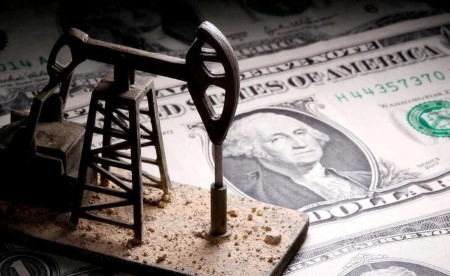




Quarterly Economic Growth Release: More BSP cuts to come
 DOWNLOAD
DOWNLOAD

Monthly Economic Update: Fed catches up
 DOWNLOAD
DOWNLOAD

Inflation Update: Steady and mellow
 DOWNLOAD
DOWNLOAD


Oil and interest rate futures point to cyclical downturn before end of 2022: Kemp

LONDON, July 22 (Reuters) – Recent moves in crude oil and interest rate futures anticipate a downturn in the business cycle that will cause oil consumption to dip before the end of the end of the year and into the first three months of 2023.
Federal funds futures prices imply US interest rates are expected to peak at 3.50-3.75% in the first quarter of 2023, up from 1.50-1.75% at present, before declining around 50 basis points by the end of 2023.
The interest rate path implies that a significant cyclical slowdown will be underway by the end of 2022, bearing down on inflation and allowing the central bank to ease policy to support activity from the second quarter.
Since early June, rising expected interest rates have correlated closely with the softening of Brent calendar spreads from the first and second quarter of 2023 onwards.
Oil futures prices are anticipating slower growth by the end of 2022 – leading to an accumulation of inventories from early 2023 relieving some of the tightness in the market.
Brent’s spread for the first quarter of 2023 has softened to a backwardation of less than USD 3.80 per barrel from more than USD 5.40 in early June.
The spread for the second quarter of 2023 has come in even more sharply to a backwardation of less than USD 2.30 from nearly USD 4.30.
Purchasing managers’ surveys show the manufacturing sector losing momentum in the United States and already contracting in the euro zone.
In the United States, the Institute for Supply Management’s composite manufacturing index slipped to 53.0 in June (53rd percentile for all months since 1980) from 56.1 in May (76th percentile) and 57.6 in January (84th percentile).
The euro zone index has slumped to 49.6 in July (28th percentile for all months since 2006) from 52.1 in June (48th percentile) and 58.7 in January (95th percentile).
The forecast timeline for a slowdown implied by interest rate and oil futures appears reasonable and there are already signs that it is underway.
The only question is whether it is mild enough to count as a mid-cycle soft patch, prolonging the current cycle into 2023 and 2024, or severe enough to end the current cycle and start a new one later in 2023.
The cycle’s evolution depends on (a) the course of Russia’s invasion of Ukraine; (b) sanctions imposed by the United States and European Union in response; (c) the pace of disinflation; and (d) how far consumers and businesses pull back spending in response to higher inflation and a deteriorating economic outlook.
These four factors will determine whether the slowdown is brief and shallow or longer and deeper – and whether the accumulation of petroleum inventories is relatively modest or much larger.
(John Kemp is a Reuters market analyst. The views expressed are his own. Editing by David Evans)
This article originally appeared on reuters.com





 By Reuters
By Reuters